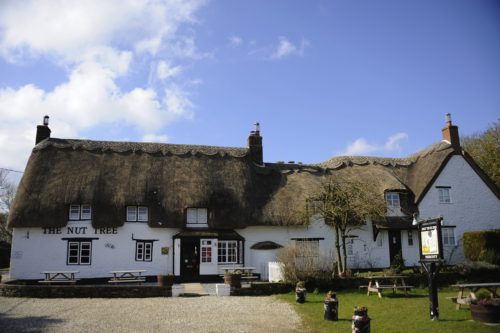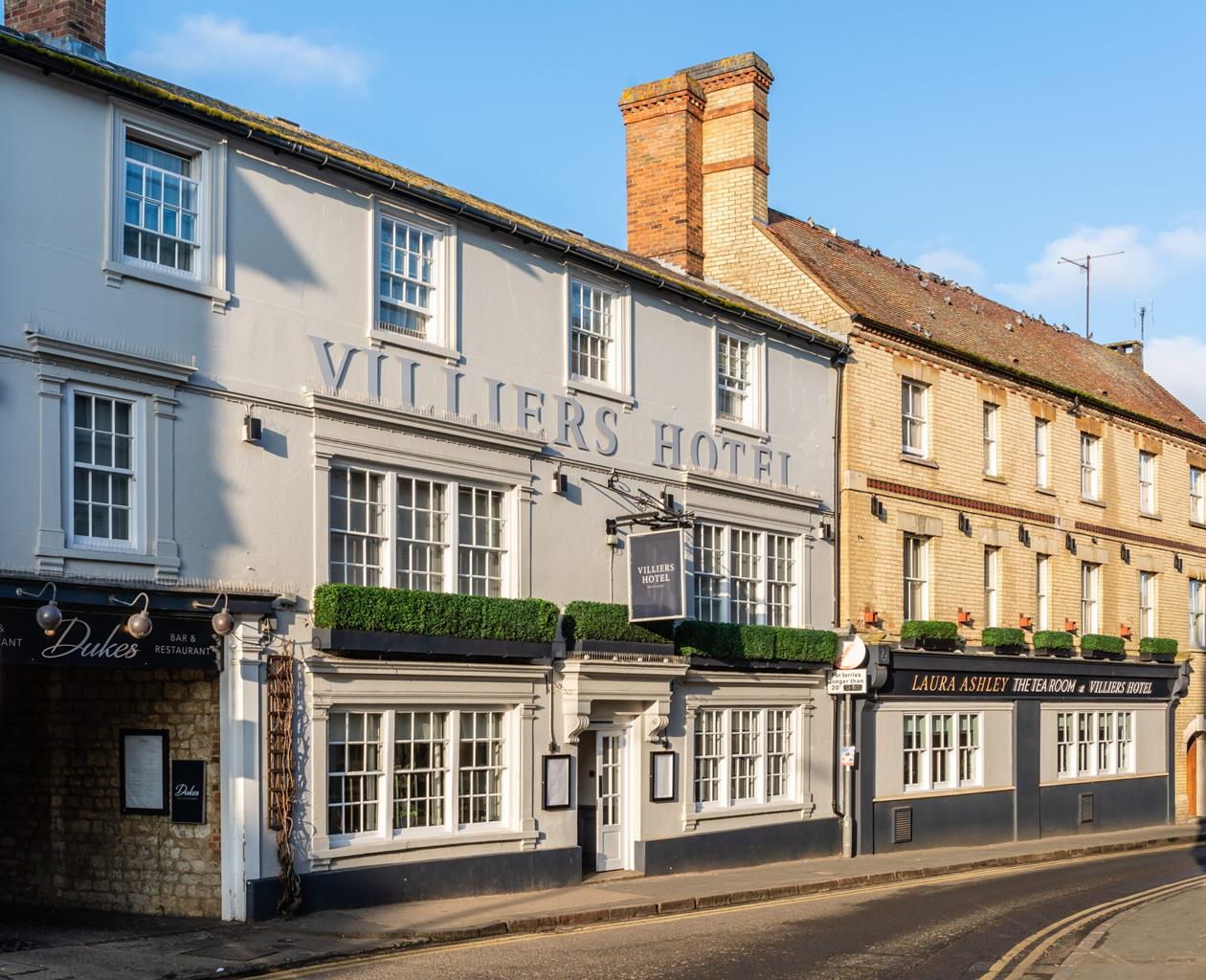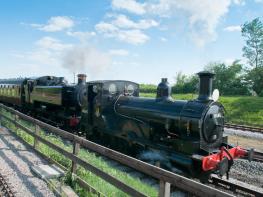This Grade II listed building, with its elaborate Elizabethan-style chimney stacks, stands at…
Waddesdon Manor and Waddesdon

3.75 miles (6kms)
About the walk
The story of the Rothschilds can be traced back to Frankfurt’s Jewish ghetto in the 16th century. Mayer Amschel Rothschild founded the famous banking dynasty in the 18th century, and by the 19th century they had became the richest and one of the most powerful families in Europe, acting as bankers to monarchs and governments. They built palaces and castles, and collected fine and decorative art.
Baron Ferdinand de Rothschild (1839–1898) bought the Waddesdon Estate – then nothing but farmland – and had French architect Gabriel-Hippolyte Destailleur build him a country retreat in the style of a Loire château. It was created as a place to entertain guests, most famously at the baron’s weekend house parties which included figures from the social circle around the Prince of Wales.
The Rothschild dynasty
Several of the houses, now outside the estate in Waddesdon itself, and including the village hall, were rebuilt by Ferdinand de Rothschild. They can be distinguished by maroon-painted gables and ornate architectural detail, and all feature the same Rothschild family symbol: five arrows held in a fist on a red shield. The red shield is a reminder of the house, Zum Roten Schild ('At the sign of the red shield'), which the family’s 16th-century forefathers had inhabited in Frankfurt. This is also where the Rothschild name comes from. The five arrows represent Mayer Amschel’s five sons, four of whom established banking houses in Europe’s leading financial centres of the day – London, Vienna, Naples and Paris. The fist symbolises their close links: the branches of the family are descended from the five brothers and to keep even closer links they often intermarried cousins, though this practice ceased in the 19th century.
As a family, the Rothschilds were also among the greatest collectors of the 19th century, seeking the highest quality of workmanship and always with a keen sense of historical importance. The houses that they built, the interiors they created and the magnificent collections within them became known internationally as the ‘goût Rothschild’ referring to a detailed, elaborate style of interior decoration and living which had its origins in 19th-century France, Britain and Germany. Waddesdon is one of the rare survivors of that splendour.
Waddesdon Manor passed through the dynasty until the late 1950s. By this time the heyday of the grand country house was long gone, and without an heir, James de Rothschild (1878–1957) and his English wife, Dorothy (1895–1988) decided to leave the house, its nationally important collections of paintings and porcelain, and 165 acres (67ha) of garden and park to The National Trust. The family is still very much involved in the Manor today however, with the estate administered by a Rothschild charitable trust, overseen by Baron Jacob Rothschild (b. 1936), a British investment banker. This continues a long-standing and distinguished family philanthropic tradition, as underlined by the Rothschild Foundation on Windmill Hill.
Walk directions
From Baker Street go back up to the High Street, turn left, go immediately left past The Five Arrows, and turn left onto Silk Street for the public entrance to Waddesdon Manor. Pass through the ornate gates and follow the drive through trees. Where it veers left, by a waymarker, go straight on along a grass track to a T-junction, passing first a bowling green, then a cricket ground on your right.
Go straight uphill, past the sign for Windmill Hill Farm. Continue on the bridleway as it bends right and left, crossing two cattle grids. At a sign for Windmill Hill, The Rothschild Foundation and Windmill Hill Cottage bear left and follow the track, passing a pair of cottages on the left. Keep left at the modern Rothschild Foundation buildings and descend the steep slope to the bottom. As it flattens out, go into the field, crossing the ditch, and turn immediately right.
In the corner of the field cross back over the ditch by the bridleway marker. Go through two field gates straight ahead up the hill, keeping to the right of the field. Go though another gate onto a stony track and continue ahead.
At the next public bridleway sign turn right through a kissing gate and over a plank bridge, and walk straight ahead towards Waddesdon Manor. Go through another kissing gate and continue along the field-edge to a kissing gate on the right, halfway up the field. Cross a footbridge and stile, turn left, and head diagonally right uphill, making for a gap in the trees. Go up the slope to a broad drive, veer right and pass a waymarker as you emerge from the woodland onto a drive (where cars may be parked).
Branch half left at the next waymarker, and take the grassy path across the slopes. Head for a kissing gate to the right of three tall Wellingtonias and follow the path across pasture, towards woodland. Head for a kissing gate, pick your way through the trees to a drive and cross over towards Waddesdon. Pass garages and an ornate house with the five arrows emblem before emerging at the road. Turn right onto the High Street and continue for a few paces to return to Baker Street.
Additional information
Mostly parkland and drives, some fields and gravel track; 1 stile
Formal country park and woodland
Mostly on lead, particularly near farm buildings; not allowed in grounds of Waddesdon Manor
OS Explorer 181 Chiltern Hills North
On Baker Street, off Waddesdon High Street (A41)
None on route
WALKING IN SAFETY
Read our tips to look after yourself and the environment when following this walk.
Find out more
Also in the area
About the area
Discover Buckinghamshire
Buckinghamshire is a land of glorious beech trees, wide views and imposing country houses. Victorian Prime Minister Benjamin Disraeli savoured the peace and tranquillity of Hughenden Manor, while generations of statesmen have entertained world leaders at Chequers, the Prime Minister’s rural retreat. Stowe and Waddesdon Manor are fine examples of even grander houses, set amid sumptuous gardens and dignified parkland.
The Vale of Aylesbury is a vast playground for leisure seekers with around 1,000 miles (1,609km) of paths and tracks to explore. Rising above it are the Chiltern Hills, a designated Area of Outstanding Natural Beauty covering 308sq miles (798sq km). They are best appreciated in autumn, when the leaves turn from dark green to deep brown. In the southeast corner of the Chilterns lie the woodland rides of Burnham Beeches, another haven for ramblers and wildlife lovers. Although the county’s history is long and eventful, it’s also associated with events within living memory. At Bletchley Park, more than 10,000 people worked in complete secrecy to try and bring a swift conclusion to World War II. Further south, an otherwise unremarkable stretch of railway line was made infamous by the Great Train Robbery in the summer of 1963.
Nearby stays
Restaurants and Pubs
Nearby experiences
Recommended things to do
Why choose Rated Trips?
Your trusted guide to rated places across the UK
The best coverage
Discover more than 15,000 professionally rated places to stay, eat and visit from across the UK and Ireland.
Quality assured
Choose a place to stay safe in the knowledge that it has been expertly assessed by trained assessors.
Plan your next trip
Search by location or the type of place you're visiting to find your next ideal holiday experience.
Travel inspiration
Read our articles, city guides and recommended things to do for inspiration. We're here to help you explore the UK.













